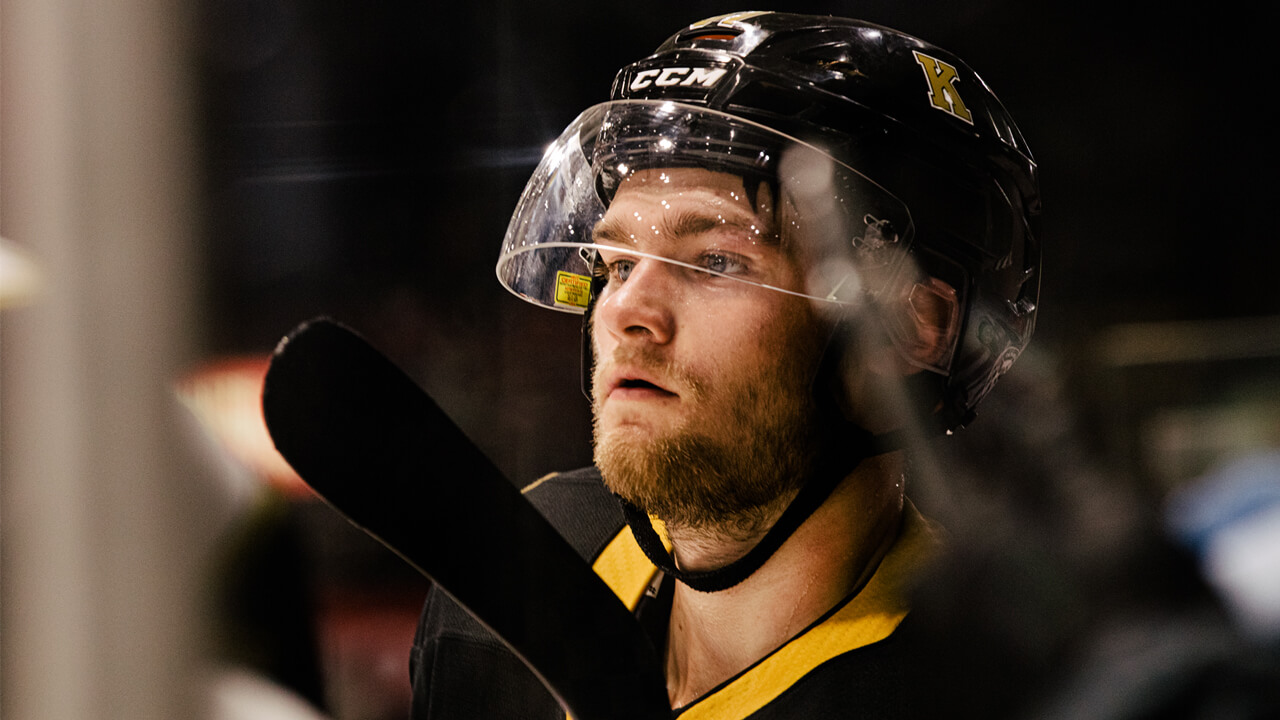
EXCEPTIONAL TIMES
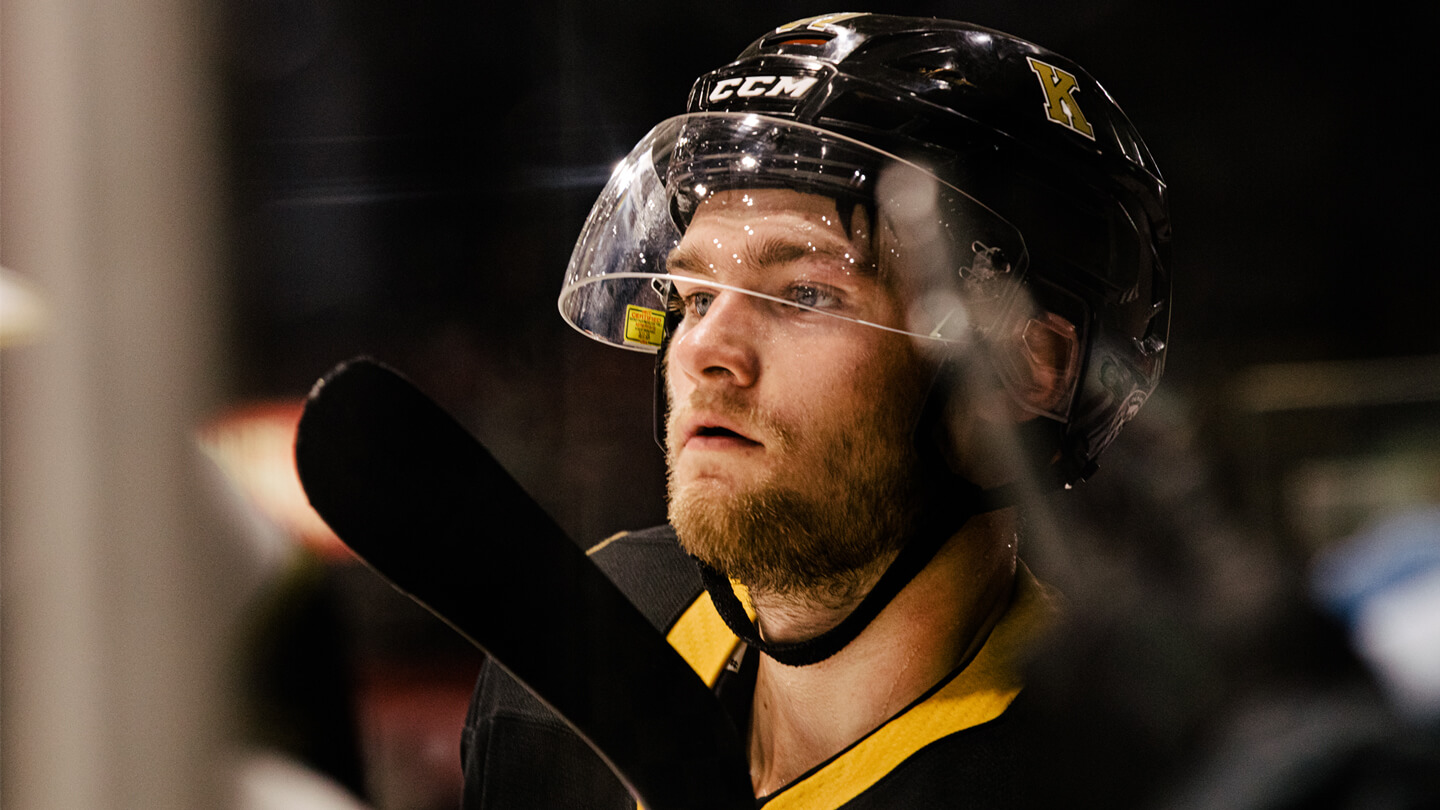
J
ust days before the opening games of the Ontario Hockey League campaign, the CHL announced its preseason rankings. The Kingston Frontenacs were top-ranked in the OHL and slotted fourth overall in major-junior, heady stuff for a team that won just 19 of 62 games in 2019–20 before COVID shut down play, and went 38 games below .500 the season before that. The reason for such enthusiasm was a 17-year-old who has been projected as the likely first-overall pick in the 2022 NHL entry draft since he was in Grade 9: centre Shane Wright.
Every fall, the attention of fans and NHL scouts focuses on a teenager who has been designated as the next big thing, who inevitably draws comparisons to established stars drafted first overall in year’s past. Some will say raising expectations on a kid is unfair and only sets him up to disappoint, but it’s just a fact of hockey life — and a matter for gallows humour in the business. Said one NHL scout before the Frontenacs’ home opener against Ottawa a couple of weeks back: “The second-guessing will probably start in the first intermission.”
Once the puck dropped, though, the Frontenacs took over and did their best to delay and maybe even pre-empt any second guessing of either their ranking or Wright’s. Barely four minutes into the game, Kingston led 3–0, Wright in on the second and third goals: On the second, he flashed a dazzling bit of stickhandling to start a three-way passing play, setting up Francesco Arcuri for what would stand up as the winning goal at the end of the night; and, a couple of shifts later, his long, searching pass, from deep in his own end to the red line, sent Paul Ludwinski off on a breakaway that he neatly finished in his first major junior game. For the rest of the first period, though, Wright generated chances but had nothing to show for them. Two assists, one of them a secondary. It was a solid performance, but nothing that got you on the edge of your seat, never mind up on your feet.
Wright’s talent did finally shine through on a powerplay late in the second period, though it happened so fast you might have missed it if you blinked. He had been back on the point for previous shifts with the man-advantage, but first-year coach Luca Caputi shuffled the unit and moved Wright up front. When the puck hit his stick in the slot, he wired it high to beat Collin MacKenzie, not even giving the Ottawa goaltender time enough to wave at it. That skill, you had to think, will serve him well at the next level, a goal scorer’s release that a few NHL first-liners would envy.
After 60 minutes, the score wound up 8–1, with the Frontenacs easing up down the stretch against an overmatched opponent in their first of three games that weekend. Wright was named the third star, though it felt more like an honorary award than a fair rating of his play and impact that night. “Not exactly high energy from Wright,” one scout noted. “He’s looking to make chances for his wingers instead of taking the chances that are there for him. He could be a little more selfish. We’ll see. It’s a long season.”
And it has been an even longer time away.
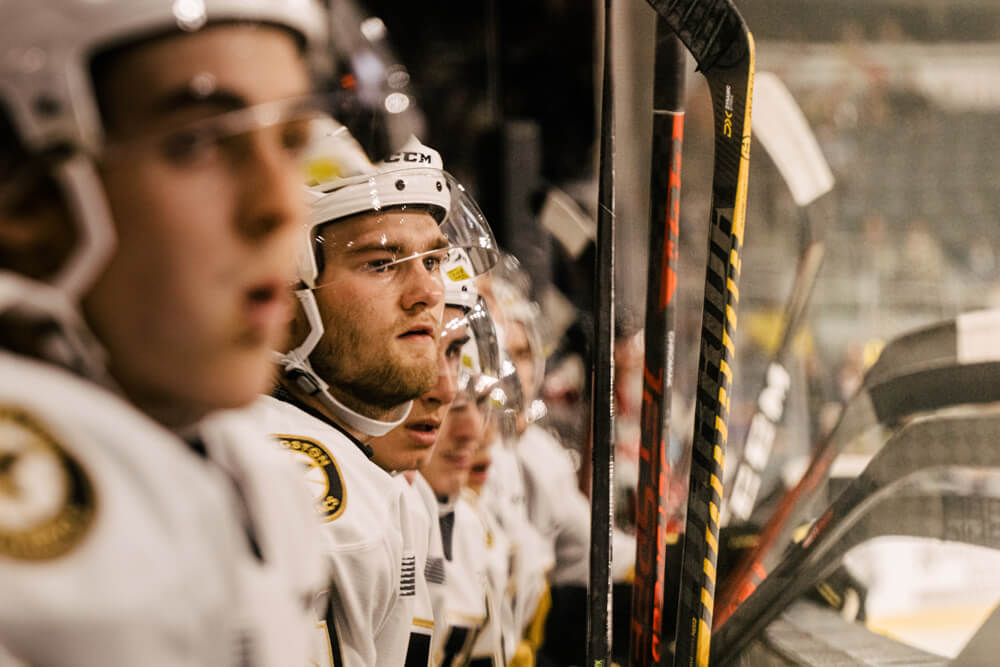
G
iven the disruption and contraction of junior and college schedules last winter, the complete cancellation of the OHL’s 2020-21 season and life in general being turned inside out, projecting next year’s NHL entry draft is — at this point, anyway — somewhere between hard and impossible. Limited viewing is one thing, but some draft-eligibles have only a handful of major-junior games in the WHL and OHL last season, while others skated in their debuts at this level in the last few weeks.
One measure of the challenge faced by talent evaluators: NHL Central Scouting Service held off releasing a preliminary list for A-, B- and C-ranked prospects until October 18. CSS usually circulates its list in early September. The projections themselves are painfully cautious, reluctant to oversell any in the pool. Only seven CHL players are ranked as likely first-round picks. (Five kids from the US National Team Development Program have been designated as first rounders. Likewise, three Finns, two Russians and a single Swedish kid. Just one from the NCAA ranks and none from USHL. That’s 19 projected first-rounders to fill 32 open slots.)
Draft reports on players who’ve missed significant time always feature the proviso “limited viewing.” In 2022, that could apply to the entire class. Says one veteran scout: “It’s been a scramble for everyone. OHL players didn’t get a chance to play at all. Quebec league and the [WHL] played reduced schedules, and the players there didn’t get the same sort of chance to show what they could do. Scouts weren’t getting to games, [they were]doing everything by video. You’ve now got a lot of draft-eligible players who have really limited [major junior]experience or none at all. And no one knows what effect all that disruption will have on their development.”
The player most likely to be selected first overall next June is one of the few who isn’t a case of limited viewing. NHL teams have already had an eyeful of Shane Wright. Though a 2004 birthday, Wright had a chance to play two seasons ago when he was granted exceptional-player status for the 2019–20 season, and even though the season was abruptly pre-empted by Covid, he tore it up. His 66 points in 58 games with the Frontenacs earned him the CHL Rookie of the Year award. The only other to win the trophy as a 15-year-old was John Tavares.
While OHL teams know what they’re facing when Wright’s on the ice and NHL teams have a decent book on him, his will be an interesting case to follow this season. He believes he’s a better player now than he was when the world shut down in March 2020 — bigger, stronger and more explosive on his first step. But will he be able to pick up where he left off, or has the long hiatus impacted his development?
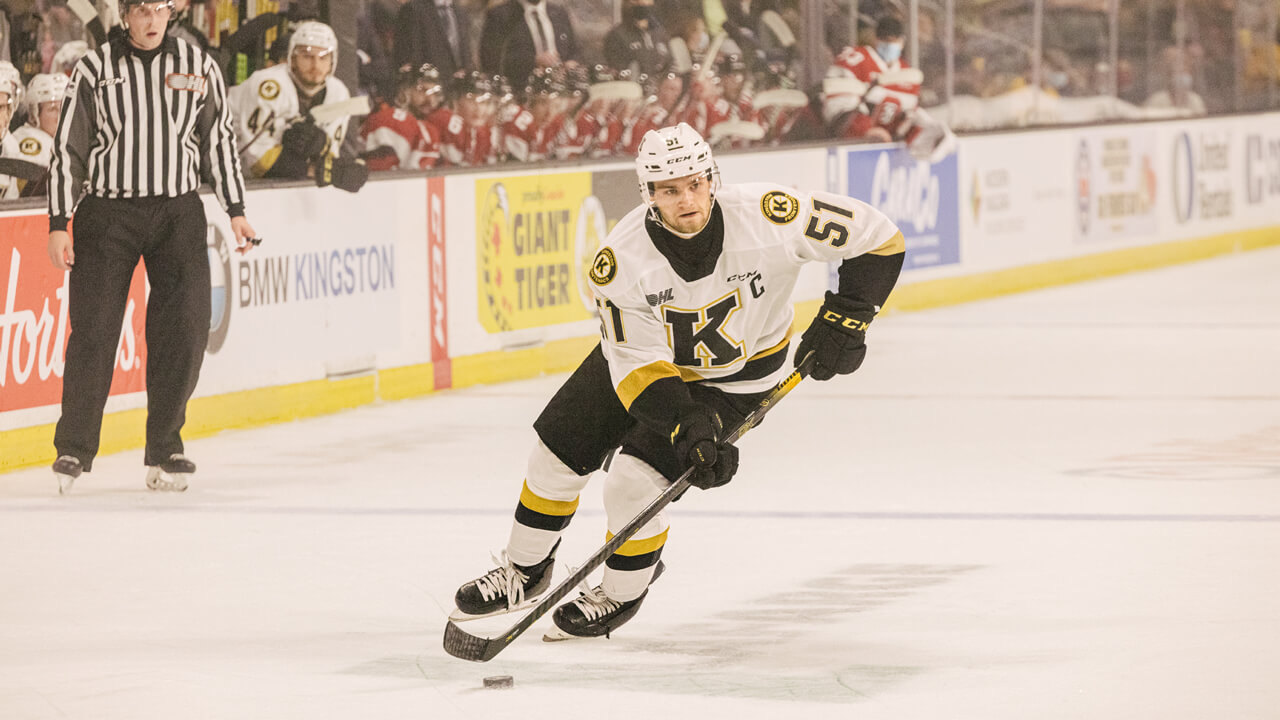
A
few common threads run through the stories of elite players who are touted as the next big thing. Inevitably, their parents have an athletic background. More likely than not, their fathers played a reasonably high level of hockey, if not professionally, and took active roles in their sons’ development. Connor McDavid’s father played to Junior A, Sidney Crosby’s dad was a QMJHL player and the Tkachuks’ dad is Hall of Fame material. This is the stuff we’ve come to expect in the bios of 17-year-old phenoms.
Shane Wright’s story falls outside the template.
“We’re not hockey people,” says his mother, Tanya, a school teacher.
“I played soccer growing up, not hockey,” says his father, Simon, who works for a nutritional-supplements company.
Though clearly proud of what their son has accomplished, the Wrights seem at times mystified, or maybe amused, by the stuff that goes on around the game off the ice — which is to say this whole circus looks to them the way it must to anybody who hasn’t entered the vortex that is minor hockey. They did pick up the signs that Shane was physically precocious and maybe in the 99th percentile on some counts, even away from the arena. “Shane’s sister is three years older than him and when she was learning to ride a two-wheeler, he stepped right in and picked it up immediately, way ahead of other kids his age,” Tanya says.
The Wrights enrolled Shane early in Timbits hockey and he more than blended in. “He was on the younger end of the [age]four and five group and he immediately got it,” Simon says. “We’re thinking, ‘Okay, he obviously enjoys this and he’s quite good at it.’ It wasn’t like we were pushing him or that he had a program or anything like that. The idea that he had a special talent didn’t really kick in until he had the opportunity to play locally for the [atom]AAA team. I think he was six, underage, and did very, very well. All the milestones along the way seemed to indicate that you’ve kind of got something here. Then again, there was always a voice of reason behind it that said, ‘You know what? There are so many kids out there and you never really know how things will turn out.’”
If the Wrights weren’t entirely clear about Shane’s potential on the ice, they did pick up on a couple of other aspects of his character that have served him well to this point in his hockey journey. “From an early age, he was definitely wired differently than others when it came to competitiveness,” Simon says. “Whatever he did, to be honest with you, a competitiveness just came out of him, just naturally. We almost had to pull him back sometimes.”
Shane also seemed to intuitively know how to carry himself when he was off the ice and around kids a year or two older. Simon cites a tournament in Ottawa when a team of older kids offered him a chance to skate with them. “He was eight, so I don’t know how he’s going to feel about being around a bunch of boys he’s never met. I was going to go with him down to the dressing room but he said, ‘No, I’m good. I’m good, dad.’ He just wandered into the changeroom on his own, not knowing a single soul in the entire room, including the coaches. But he just fit in perfectly. Between games he was having barbecue with boys, throwing a football around with them. It was just easy for him, natural. He had a really high social IQ. He knew how to read a room.”

When Shane turned 12, he reached a tipping point: Like so many of the elite players he’s compared to, he ran out of the necessary challenges close to home. He needed to play in a better organization with better surrounding talent than was available in Burlington, Ont. The Wrights might not have been hockey people before then, but they made a decision like those of families deeply invested in kids’ careers. “I moved with Shane into Vaughan [a suburb north of Toronto], so that he could play for the Don Mills Flyers,” Simon says. “Tanya stayed in Burlington close to where her work was and where our daughter was in school.”
“It was definitely an adjustment for me and my family … more for my parents,” Shane says. “At the start it was really hard, new school, not being able to see my mom every day. It got easier, though. I could see my mom when we’d drive back on weekends and really, during the week, all I had to do was go to school and play after. It was a big sacrifice for them to make for me.”
When Shane was with Don Mills and still in grade school, his parents were approached by an agent at a game and were dumbfounded. It was akin to that moment in The Wizard of Oz when Dorothy realizes that she’s not in Kansas anymore. For the Wrights, everything leading up to it had been minor hockey, but from then on it was something more. “Why is this guy giving us his business card?” Tanya says. “Why would this be happening now? Maybe we saw some signs and missed some others but this cemented it for sure.”
When Shane, then 14, entered his minor midget season with Don Mills, the Wrights faced another decision: whether to apply for exceptional-player status to allow Shane early entry to the major junior ranks. The case for: He had played up a year or more going back to Timbits; all the top minor midget kids were on schedule to be drafted into the OHL; and he continued to excel among them. The case against: At 15, he’d be on the ice facing a lot of 19- and 20-year-olds; the spotlight would be on him, maybe along with a bullseye; and he’d land on one of the weakest teams in the league.
Exceptional-player status hadn’t been a goal for Shane and his parents, but it was a regular point of discussion among OHL scouts and coaches around the arena. “They’re the ones that put the word out there before we ever thought about it,” Tanya says. “We didn’t even understand what it was. Shane understood what [exceptional-player status] was all about. We kind of downplayed it until his minor-midget season. At that point, our conversation was, ‘Let’s begin the season and see how it goes.’”
Shane and the Flyers both shone. He averaged better than two points a game, scored 66 goals in 72 outings, and the team lost once all season en route to a provincial title. It looked like approval of his application would be a slam dunk. It wasn’t quite that — maybe because the most recent exceptional status players, Sean Day and Joe Veleno, had little impact as under-agers and probably would have benefitted from waiting to enter the junior ranks with players in their birth year. After Hockey Canada and the Ontario Hockey Federation had done their homework, after Shane had sat through interviews and submitted an essay making the case for his readiness to play major junior, his application was approved.
Rather than being put out at all, the Wrights welcomed the vetting. “It was a very detailed process,” Tanya says. “To me, someone who’s around high schoolers every day, all of these boys should be asked the questions Shane was asked. ‘What do you do if you know your teammate who’s your roommate on a road trip may bring drugs back to the room? What do you do if you’re pressured to go along with this? What do you do if you haven’t scored in three games and you’re trying to deal with anxiety?’ Only Shane and anyone else applying for [exceptional-player] goes through that process with someone trained to assess their answers and their mental readiness [for major-junior hockey]. Other kids [who are selected in the OHL draft]just go to their teams and you hope that things will work out and it’s a good situation.”
Kingston used the first-overall pick to select Wright. Three of his Don Mills teammates were among the first nine names called, and three more went in the second round, including Francesco Arcuri to Kingston.
As much as any of those previously granted exceptional-player status, Wright validated Hockey Canada’s faith in his ability to step into some heady competition. Though the Frontenacs’ roster skewed young — Wright was one of 13 players in the lineup who were 17 or younger — they still had a shot at the last playoff spot in the Eastern Conference going into the last week of the season. And Wright led all CHL rookies in scoring with numbers that looked an awful lot like Connor McDavid’s in his under-age year in Erie.
Everything was going so smoothly. And then COVID hit and arenas across the league, like pretty much everything pretty much everywhere, went dark. Nineteen months would pass between the last game of Wright’s rookie season and puck drop at the Leon’s Centre in October.
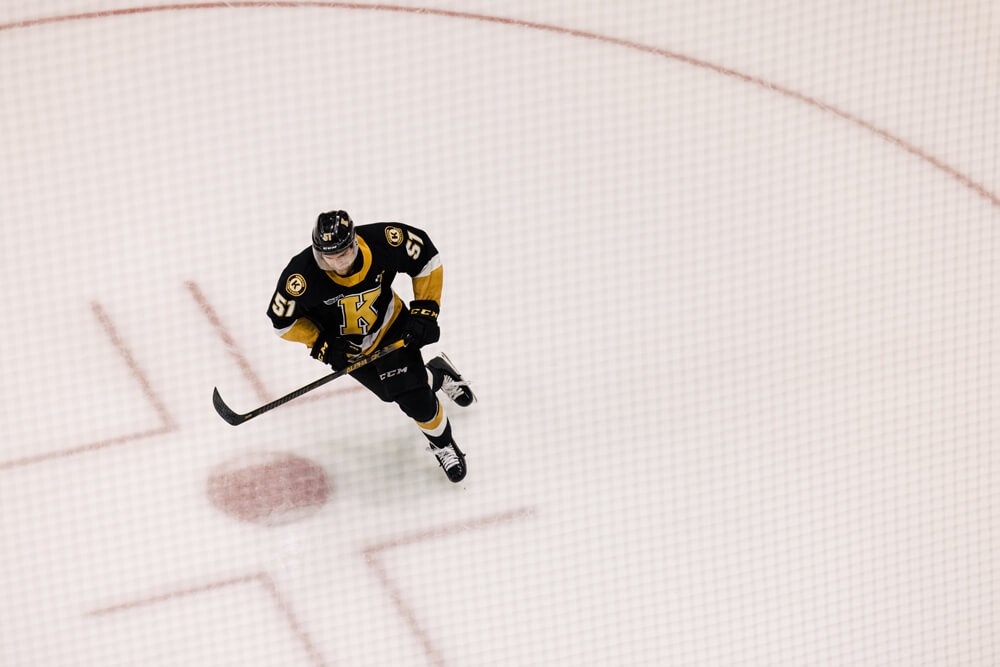
H
ow does an exceptional talent deal with exceptional circumstances? In talking about the long hiatus, Wright doesn’t describe any period of real anxiety, even though there was enough reasonable cause. (Perhaps it will pop up as a question for future applicants for exceptional-player status: How was your state of mind when you couldn’t play a game and struggled to even find a chance to get in a skate for more than a year?) Through early winter he tried to stay hopeful about a return. “We didn’t know what was going to happen with our [OHL] season — if we were going to get to play, when we might get called back,” he says. “It never did happen but really I didn’t look beyond what I could do that day. I was just trying to stay prepared as much as possible. I’m lucky with where I live, [near]a lot of local guys who play in the OHL and are pretty high-end players. I was lucky enough to skate with them through the whole pandemic. I always had someone to skate with and work out with, and I knew there were things that I had to work on.”
While some scouts have compared Wright to Nathan MacKinnon, he suggests that he tries to go to school on the game as played by Patrice Bergeron, the Boston Bruins captain who has made maybe 16 mental lapses in 16 NHL seasons, and whose four Selke Trophies undersell his defensive excellence. “I watch a lot of video of my games and the NHL guys, and I look for details in my game and things I can take away from what they do at the next level,” he says.
Hockey IQ is usually measured by the ability to make the right decisions in the heat of the game. Wright could get on the ice and go through drills and maybe even get into a scrimmage, but really there was no replicating the in-game challenges, speed and pressure for those 19 months. Practicing in isolation, in a vacuum, without the challenges of a game around him for that long — when you think it through, it would be like a boxer being limited to shadow boxing for a year and a half. It would seem hard to hold on to your skillset under those conditions, and all but impossible to grow as a player, yet Caputi believes Wright made strides while OHL arenas remained dark. “Shane knows what he has to work on,” the coach says. “He knows what he can do. Players like Shane understand the game at another level. They have a great work ethic and an attention to detail. I saw that being around Sidney [Crosby] in the Pittsburgh organization — a lot of similarities there in what they do to get ready to play the game. And like Sidney, Shane can set the standard for his teammates when it comes to their preparation and commitment.”
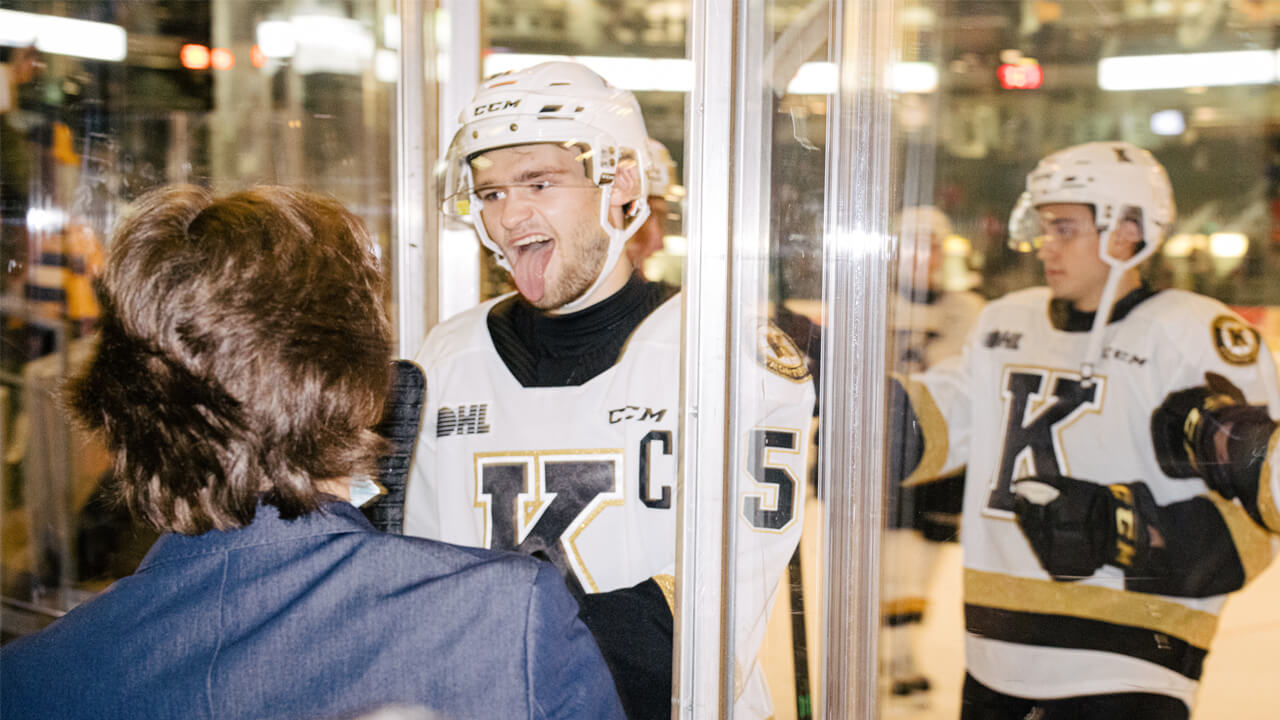
It certainly looked like his development was still on track when Wright reported to the training camp for the Canadian team that went to the under-18 world championships in Texas this spring. There’s no estimating the degree of difficulty in going into an elite international competition after not playing a game all winter. It should have put Wright at a distinct disadvantage — his Canadian teammates from the QMJHL and the WHL at least had a chance to see some game action. Likewise, players from the USNTDP and Europe could get in some action and, in the case of the latter, whole seasons in the run-up to the under-18 tournament.
A portent that Wright might’ve been more than alright came before Canada’s first game, when he was named the team captain. Even with that, few expected that his performance would wind up ranking among the greatest in the history of the IIHF event: nine goals and 14 points in five games, including two goals and an assist in a 5–3 win over Russia in the gold-medal game. The numbers would have likely been even more impressive if he hadn’t missed two games in the first round of the tournament for what was listed as precautionary reasons not related to COVID.
Inevitably, his play drew comparisons to McDavid’s performance in the 2013 under-18s where, as an underager, the Oilers captain was the leading scorer for the last Canadian team to win the gold before Wright’s. “That year, McDavid really tore it up early but you sensed he tired a bit by the semis and final,” one scout says. “Wright actually got better as the tournament went along and he was really working with some handicaps.”
Though he seemed potentially set up to disappoint, Wright makes the case that the under-18 tournament was something like his time in Don Mills — the surrounding talent gave him a chance not only to succeed but draw out the best of his game. “Playing with the high-end guys definitely makes things a lot easier,” he says. “We could really kind of feed off each other, make reads off each other and build that chemistry really quickly. The guys who are going to be high draft picks, they see things out there and really are able to think the game, even going fast.”
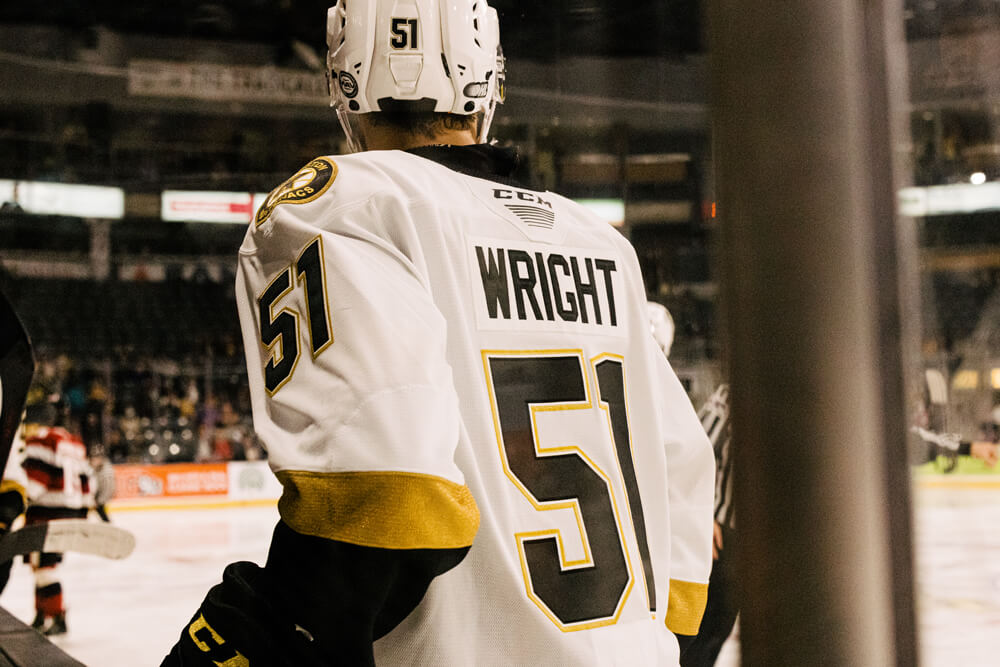
Y
ou might presume that it would be easy this fall for Wright to step back into the OHL, but like the opening game of the season he has been solid, with a shining moment on occasion, but neither dominant nor spectacular. It hasn’t been like flipping a switch.
Despite their lofty preseason rankings and the romp in the opener, the Frontenacs crashed in their next two games that weekend: a 7–2 loss at home to Mississauga and then, even more shockingly, a 4–3 loss in Ottawa to the 67’s team they manhandled 48 hours earlier. They rebounded, winning their next three games, but Wright was held off the scoresheet in the last of those, a 5–1 win over Peterborough. Granted, it’s a small sample (even if it represents a tenth of the regular season) but Wright’s two goals and four assists through six games puts him slightly off the pace from his rookie season as a 15-year-old on a team that was ranked in nobody’s top 10 in the league, never mind nationally.
Lately, Wright has been skating between left winger Martin Chromiak and Matthew Soto on the right side. Chromiak, one of Kingston’s imports and a fifth-round pick of Los Angeles in the 2020 NHL Draft, seems like a worthy complement for Wright, but Soto is a 16-year-old, the Frontenacs’ first round pick this spring, and as such is seeing the OHL game up close for the first time.
Said one scout who has viewed Kingston a couple of times since the opener: “It really wasn’t the energy I expected from Wright but to be fair it’s not been the energy I’d have expected from everybody. The game’s back but is it the same as before? Not really. Probably won’t be for a while. Where [Wright’s] game is come December will be interesting — what he plays like at world juniors. What he did at U18s was no fluke, no once-in-a-lifetime thing.”
A player who got an early start to his junior career but is taking longer to have the impact he and others expected than he might’ve hoped. For Shane Wright, getting back on the bicycle hasn’t been quite as simple for him as learning to ride in the first place.
John Kealey/Sportsnet (7)




